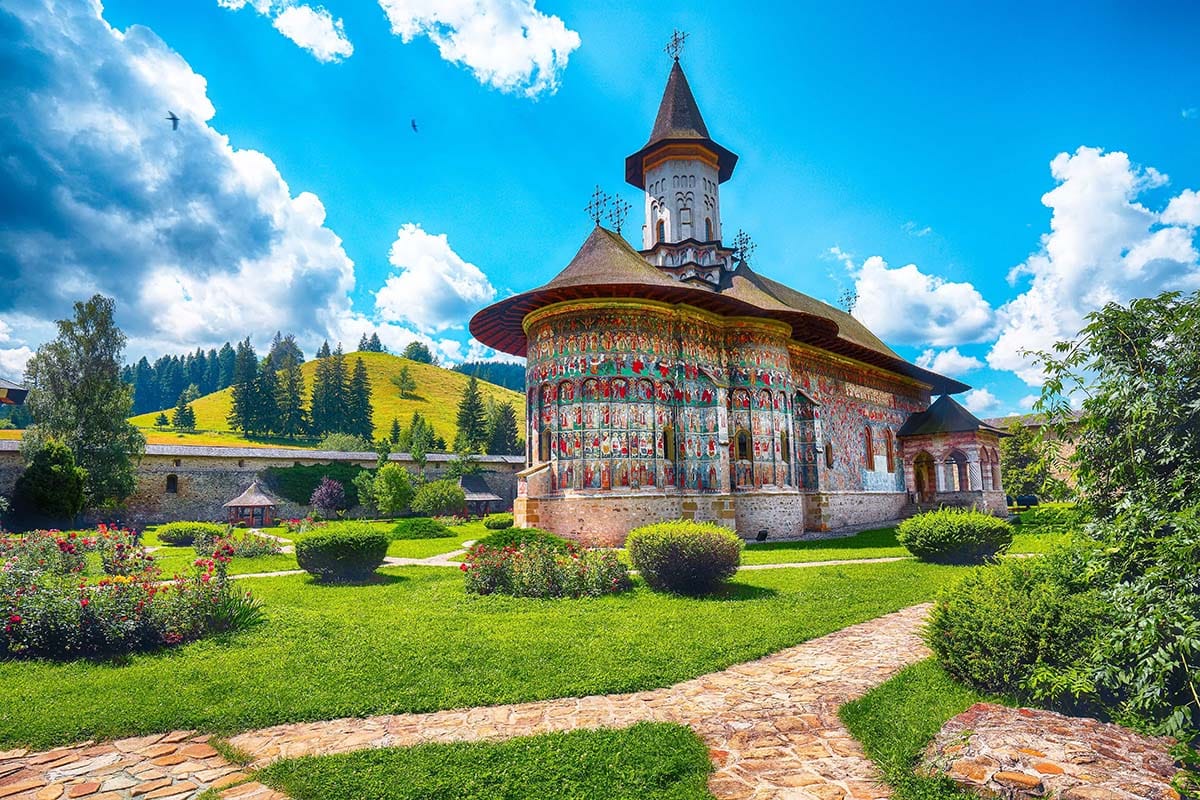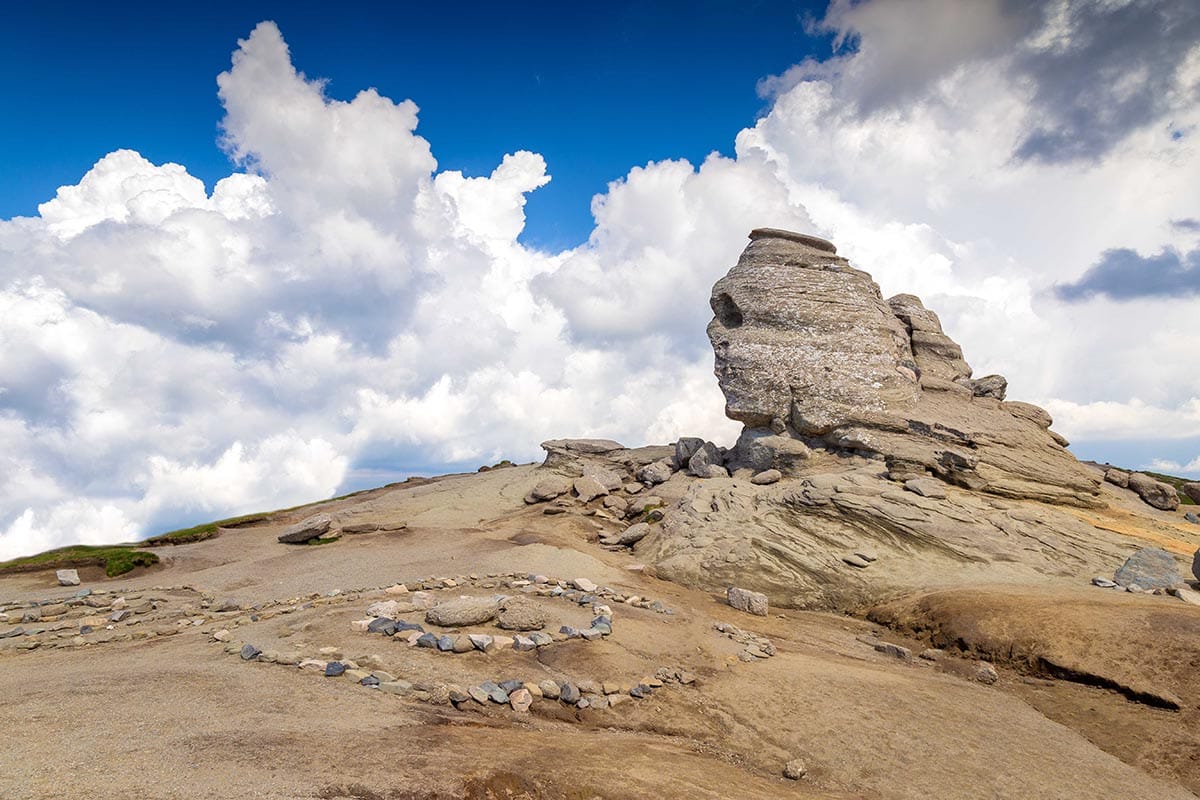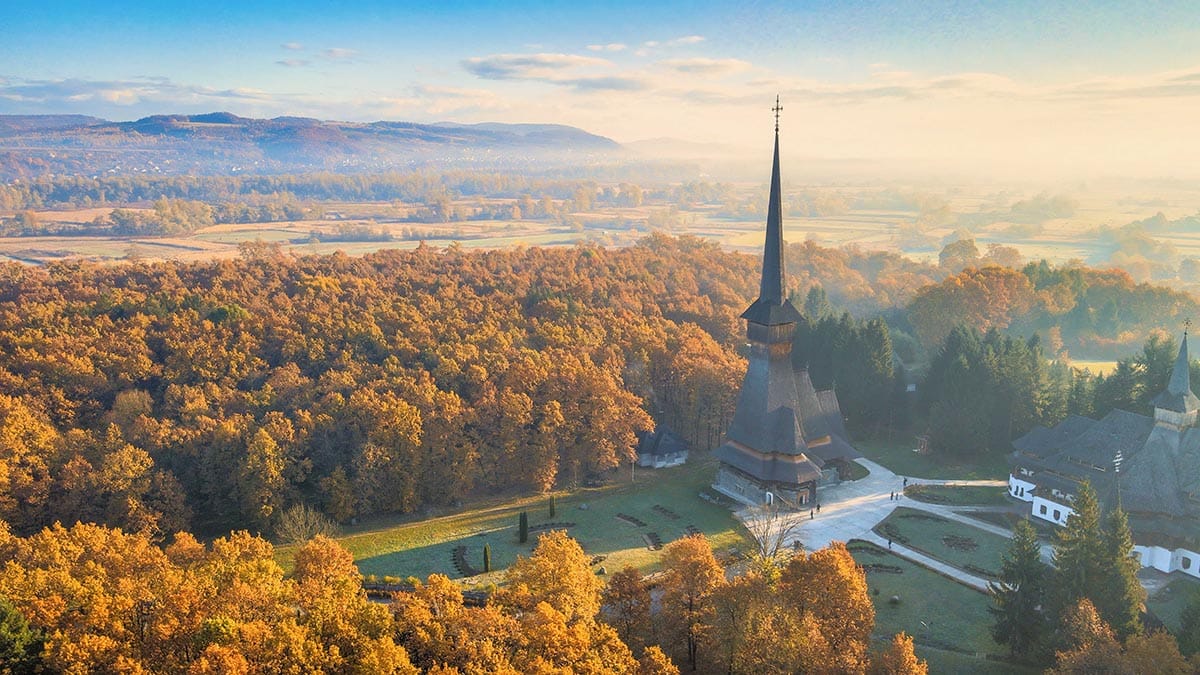If you are looking for a vacation where you experience inspiring places, then you’ve come to the right place. We bet you’ll love Romania, an exciting destination for lovers of unbeaten paths and authentic culture. Romania’s natural features are unique in Europe, our country enjoys the embrace of the Carpathians, with their areas of true wilderness, and the ever-fresh beauty of the Danube Delta, as well as extensive plains scattered with little natural and cultural treasures.
People enrich this natural treasure with unchanged traditions and a warm and generous personality. Our cultural sites, many UNESCO World Heritage Sites, give evidence to a unique history, with a heritage of Latin origin mixed with other great cultures of the continent. The stories of these places will surely fascinate you, and the deep spirituality of Romanians will impress you too. The pages that you have in your hand now offer you a systematic guide to the historic regions of the country, its unique places and traditions, about the Romanian way of life, and the historical, and cultural circumstances that made them possible.
And to stir your interest in exploring Romania, we offer you some basic guidelines that you’ll find explained in detail in the following pages. Walk with us on the paths of the Carpathian Mountains and enjoy the natural parks, which will rouse you to adventure and activity- all the more so as Romania is one of the most remarkable countries in Europe in this respect.
The Danube Delta is delightful, Moldavia and Bukovina’s monasteries comfort your eyes and calm your soul. Maramures overwhelms you with its magnificent locations, traditions and people. Banat and Oltenia’s caves and rapids flush you with adrenaline, while the fortified churches and strongholds in Transylvania take you back to the Middle Ages giving you pleasurable chills down your spine, and exceeding your imagination, even if you’ve read huge volumes of their history.
Romania’s natural features are unique in Europe, our country enjoys the embrace of the Carpathians, with their areas of true wilderness, and the ever-fresh beauty of the Danube Delta, as well as extensive plains scattered with little natural and cultural treasures.
Stop and pay attention to traditions and popular fairs, spa resorts, cultural heritage from the great cities and historical areas. And if we’ve succeeded in awaking your interest, read the following pages, which will help you design an itinerary, and then go at your own pace. You will be amazed by the original and authentic destination so close at hand.
The Little Paris of Eastern Europe – Bucharest
The Romanian capital is a delightful blend of its rich history and vibrant present. It exudes the bohemian allure of its past, reminiscent of the enchanting “Little Paris.”
From magnificent structures of modern design to intriguing remnants of its communist era, Bucharest embraces its diverse architectural heritage. As a growing metropolis, it unveils a dynamic energy, brimming with captivating attractions and bustling city life.
The lecture on what was once called the Little Paris of Eastern Europe rings in your ears from the moment you land at the international airport (17 km from Bucharest), which is named after Henri Coandă, the great Romanian inventor, born in Bucharest, whose mother was of French origin.
While Coandă invented, in Paris, the first jet propulsion aircraft (1910), in Bucharest, French architects created Little Paris. After passing by the Arch of Triumph and Kiseleff Road, landmarks that remind you of the French capital, you remain surprised by the series of monumental Belle Epoque style buildings, which are scattered throughout the city, but especially on Victoria Avenue. This route is among the oldest in town.
A leisurely walk, on Victoria Avenue brings you the impressive The Romanian capital is a delightful blend of its rich history and vibrant present. It exudes the bohemian allure of its past, reminiscent of the enchanting “Little Paris.” From magnificent structures of modern design to intriguing remnants of its communist era, Bucharest embraces its diverse architectural heritage.
As a growing metropolis, it unveils a dynamic energy, brimming with captivating attractions and bustling city life. elegance of buildings like the Cantacuzino Palace – the current George Enescu Museum, CEC Palace – National Savings Bank branch, and cool bars with terraces, where live jazz can be heard from way up the street, and the shop fronts of famous companies.
Victoria Avenue ends its route at the meeting point with Dâmbovița River, the river that runs through the capital. Not far away the Palace of Parliament makes its appearance. In front of it, Unirii Boulevard and the square of the same name open out. Face to face, two eras speak to each other, because here you can find Manuc’s Inn, a building screening the entrance to the Old Town.
On streets that seem to be gathered around a ball, you can find a land of paradoxes. Vibrant bars and clubs, elegant restaurants, chic cafes and lots of people always willing to have fun, but also some of the most important churches in the city.
Visit the Princely Church of the Old Court (Biserica Domnească de la Curtea Veche), the oldest church in Bucharest, founded in its early form by the Romanian ruler, Mircea Ciobanu during the mid-XVI century and Stavropoleos (exceptionally decorated, in Brâncoveanu style). The city catches your attention with its buildings, but breathes through its parks. Herăstrău is the most extensive, disposed on the natural lakeside with the same name. In the heart of the capital you can find the green oasis of Cișmigiu, the city’s oldest public garden, with landscape and an artificial lake, which, in winter becomes a skating rink.
The Carol I park, located on a hill once covered by vineyards, is dominated by the huge mausoleum dedicated to the heroes of our Motherland. The city will captivate the attentive and open-minded, traveller who is open to see and feel; a new face with every change of light, from sunrise to sunset and again at dawn, brought on by the gathering of eras of history.
The Revolution Square is named like that because it was from here that the last Communist leader of Romania, Nicolae Ceaușescu fled the Revolution of 1989. Just 50 years before, King Carol II had expanded the square to protect the Royal Palace (Palatul Regal) from fire, in case of… a revolution.
www.biff.com.ro
www.europafest.ro
www.festivalenescu.ro/en
www.pmb.ro
www.seebucharest.ro






